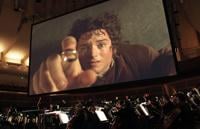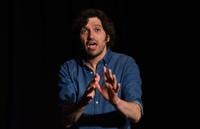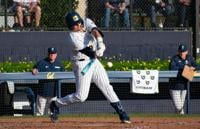Grade: 4.5/5.0
In Billie Eilish’s new concert film “Happier Than Ever: A Love Letter to Los Angeles,” viewers can sit in the comfort of their homes as they watch the young pop artist onstage at the Hollywood Bowl, performing her new hit album to an entirely empty theater. Accompanied by the Los Angeles Philharmonic and — as always — her brother-producer Finneas, Eilish pays tribute to both her hometown and the decades of musical icons that have come before her through a beautiful, hourlong sequential recital of the 16-track LP. The album itself, released in late July, is one of Eilish’s best works to date, a collection of songs that speaks candidly about coming of age under the microscopic lens of society as a public figure. Audiences find themselves bouncing from tracks that focus on difficult themes such as body dysmorphia and crippling mental health right over to inspirational rage records that push listeners to feel comfortable in their independence and celebrate the challenges of growing up. The lyrics are complex, and Eilish skillfully speaks bluntly to her listeners in an incredibly poetic way.The transition of Happier Than Ever from a solely auditory to a fully visual format in the new film was seamless. The haunting quality that reverberates throughout Eilish’s vocals in the album was reflected in the simplicity of the stage decorations, the dim ambient lighting, and the overall eeriness that accompanied the fact that the always-at-capacity Hollywood Bowl was now motionless, not a person in sight. Calling upon an older sound, less polished and modern than the final recordings, Eilish gives a nod to the style of past Los Angeles idols, mixing her modernity with the qualities of classics such as Doris Day or Frank Sinatra.Unfortunately, the choice to intersperse animated sequences throughout the film detracts from the powerful draw of Eilish’s performance. While the intent was likely to be cinematic, the contrast between the live and cartoon likeness ends up feeling goofy, like a video game cutscene disrupting an otherwise emotional tribute concert. This is not to discredit the talent of the artist Oscar winner Peter Osborne, who did a phenomenal job painting a wide range of worlds, from stunning replications of California’s coastal landscapes during the opening track “Getting Older” to haunting graveyards in “Everybody Dies.” However, every time the caricature of Eilish appears behind the steering wheel on screen, the film’s success in creating a deep listener-artist connection falters.That being said, “Love Letter” does a stellar job in terms of framing each song individually, cleverly altering the coloring of the stage lights, set decorations and even the framing of Billie herself to match the mood of the song and the pace of the vocals. Some songs feature pulsating red and black lights, with Eilish throwing herself into a full-body performance, while others shine a single spotlight on the artist as she sings melancholic harmonies about dark desires. Director Robert Rodriguez is savvy in terms of fluidity and camera movement, allowing the videography to breathe in an authentic way that brings the audience into the moment. Any static moments are noticeable in the film, intentionally placed to draw attention to a significant lyric or simply to force the viewer to hover on a specific moment for a beat. To those skeptical about putting in the time to watch the film, it must be noted that “Love Letter” is undoubtedly an enhancement of Happier Than Ever, not simply a replication. To watch Eilish’s live performance is to rediscover the songs through a more raw, more candid lens — a quality that has pulled fans in since her debut in 2017. This film proves that the album is not simply a made-for-radio hit list, but rather a living, breathing piece of art that deserves to be seen (as well as heard) by anyone who gets the chance.











